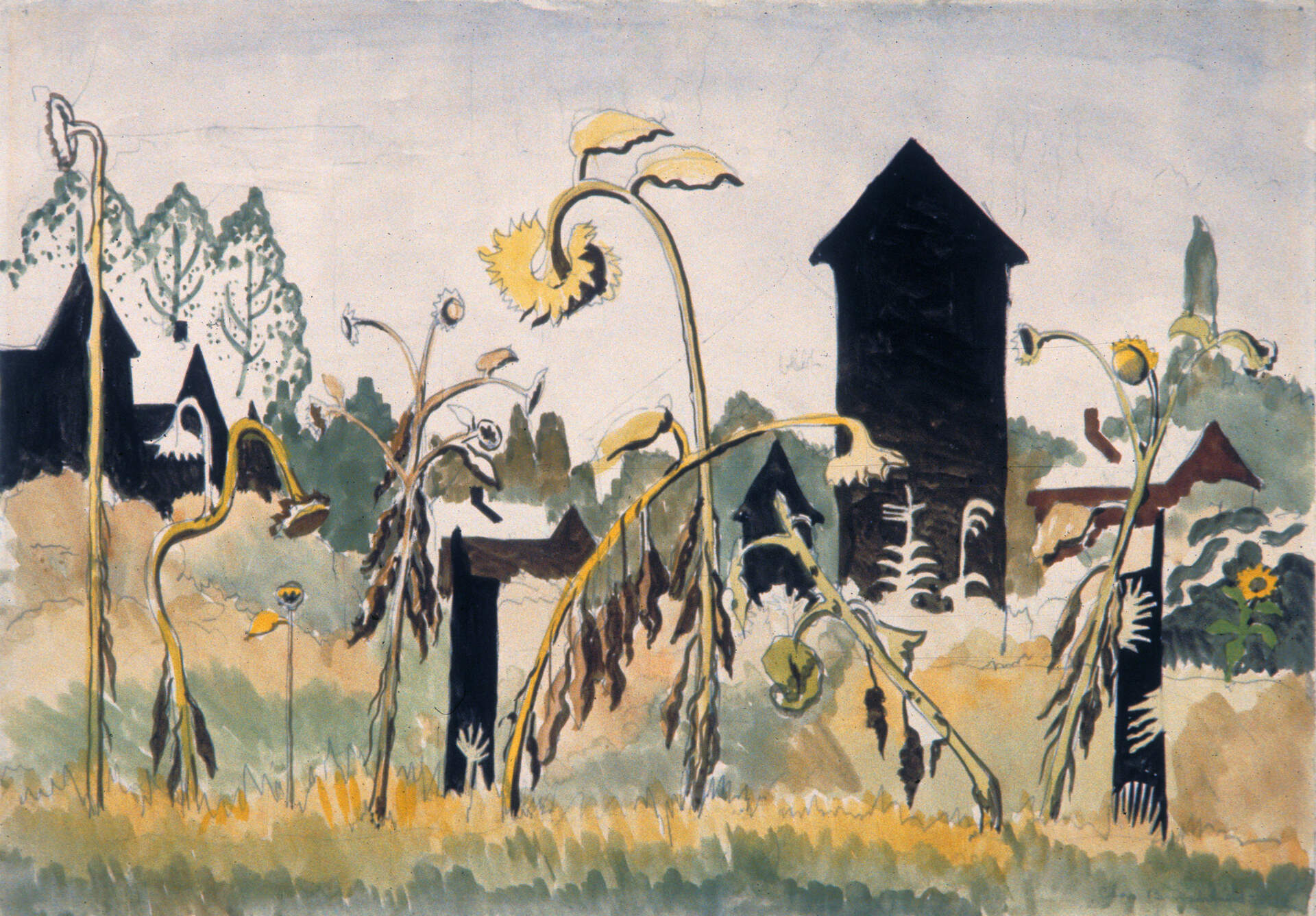
Charles E. Burchfield (1893-1967), Rogues Gallery, 1916; watercolor and pencil on paper, 13 7/8 x 17 7/8 inches; The Museum of Modern Art, New York, Gift of Abby Aldrich Rockefeller, 1935
Charles Burchfield and The Sunflower Sutra
Part of M&T Second Friday
Sep 9, 2016 7:30pm — 12:00am
Join us on September 9 during M&T Second Friday for a discussion of the sunflower in science and art, and the role it plays in the transformation of the American landscape. The program will feature Tullis Johnson, Mike Basinski, Daniel Potts, David Siering and Ed Sanders.
In the spring of 1940, Charles E. Burchfield went to the industrial flats in South Buffalo with his son Arthur to sketch. His goal was to work on a painting he titled Crumbling Earth. He wrote in his journal that “The air was thick with the mingling of a thousand smokes from the chemical and steel plants to the west”. The entry continues:
"I found some old stalks of wild sunflower, that had alternately been bleached by the weather, and then coated with the smoke & grime, until they were now a beautiful silvery gray."
Allen Ginsberg’s The Sunflower Sutra (1955), juxtaposes a “sunflower poised against the sunset” with the “specter and shade of a once powerful mad American locomotive.” The poem, published in Howl and other Poems in 1956 was inspired, in part, by Ah Sunflower (1794) by William Blake.
The Common Sunflower (Helianthus annuus) is a hyperaccumulator plant which can, through a process called phytoremediation, be used to treat soils contaminated with heavy metals. The use of these and other plants can be an aesthetically pleasing solution to soil remediation which uses solar power as an energy source.
Introduction by Tullis Johnson
According to the Monier Williams Sanskrit English Dictionary (1899),Sutra is a Sanskrit word meaning “that which like a thread runs through or holds together everything”. Tullis Johnson will present Burchfield’s own “sunflower sutra”, a collection of painting of sunflowers that emerge at various times in the artist’s career.
Reading by Mike Basinski
Mike Basinski will read Ah Sunflower (1794) by William Blake, a poem that inspired Allen Ginsberg in 1948 when he happened upon a book by Blake in the house of a friend in East Harlem, New York.
Lecture by Daniel Potts and David Siering
Dr. Daniel L. Potts, associate professor of biology at SUNY Buffalo State, and David Spiering, ecologist at Tifft Nature Preserve, will speak about soil remediation and the use of hyper-accumulators; plants capable of growing in soils with very high concentrations of metals, absorbing these metals through their roots without suffering toxic effects, and concentrating extremely high levels of metals in their tissues.
Reading by Ed Sanders
Edward Sanders, poet, singer, social activist, environmentalist and author will read Sunflower Sutra (1955) by Allen Ginsberg, a poem that presents a sunflower growing in a train yard as a metaphor for the mid-20th century American soul.